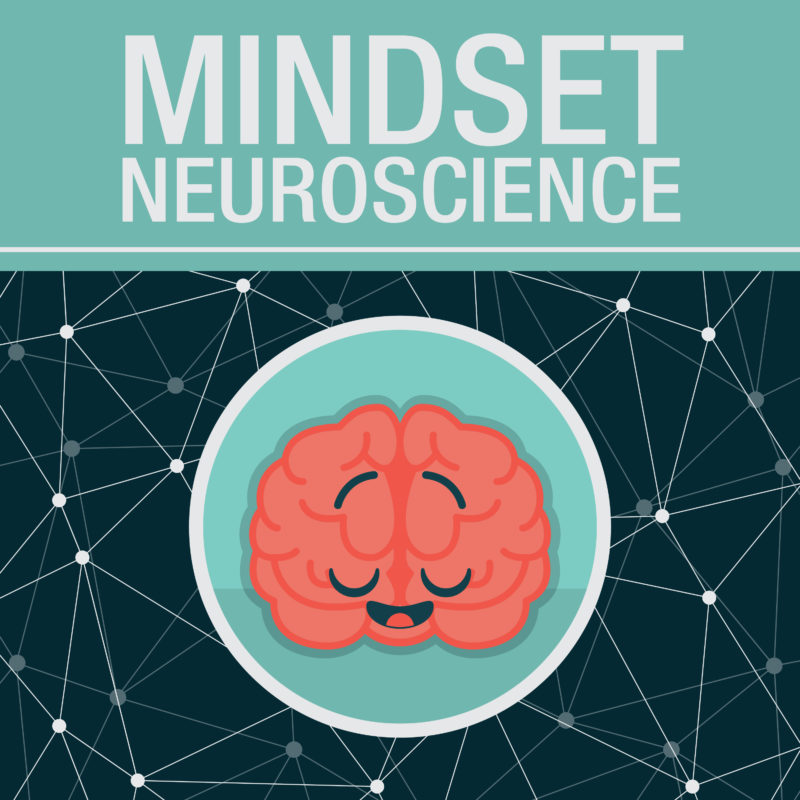Our past experiences are not simply stored in the brain—they are patterns embedded into the circuitry of our brain-body system.

For many people, their history can linger as patterns of dysregulation, stress, or a sense of being "stuck" in old reactions.
But -as you've likely heard by now... neuroscience is showing us that the brain is not completely fixed by our past. It can be actively shaped by what we do in the present.
This is the promise of neuroplasticity. It's our capacity to rewire patterns, even those that we have adopted or been exposed to through our past experiences and our history.
Listen to this as a mini podcast:
Mindset Neuroscience on Spotify
Mindset Neuroscience on Apple Podcasts
Also as a short video snippet you can share! Youtube.com/stefaniefaye
The Science of Neuroplasticity: How Our Brains Change
Decades of research show that our neural networks are dynamic and responsive to experience (watch my TEDx talk on experience-dependent brains 🙂
It's not necessarily an event or situation in and of itself* that determines the effects it will have on someone's brain and nervous system. It is an intertwined process of events interacting with existing neural, behavioral and social resources that a person has access to when events happen.
(*watch this video to learn more about Stimulus-Organism Responsel
Negative past events come in many forms, such as consistent exposure to chronic stress, high risk caregiving, neglect or abuse, tragedy and different events that happen in communities and in families, interpersonal violation of boundaries.
Our history with other humans can lead certain types of neural circuits to dominate our experience.
Sometimes, traumatic or adverse experiences within our lives can lead circuits related to fear, vigilance and self-protection, to become very hyperactive and dominant.
And this can make it harder for some people to access states of calm and regulation and connection.
Old patterns do not have to become our destiny.
Through intentional experiences, new connections can be forged, and old ones softened.
Research into self-directed neuroplasticity shows that when we engage in practices that combine mindful awareness, movement, and social connection and social support-seeking, we can activate our neural circuits in ways that can help us transcend our past (Fuchs 2024; Schwartz, 2005, Davidson, 2008)).

It’s not enough to simply "think differently."
Real change requires MOVEMENT and engaging the body and the senses.
This is why embodied approaches—movement, breathwork, and sensory awareness—can be effective at helping us access new states of being. In my work with coaches, leaders, and professionals, I emphasize that the nervous system must experience safety and novelty to unlock new pathways.
Here are a few science-backed strategies that support neuroplasticity for improved wellbeing and functioning:
- Micro-movements and sensory rituals: Gentle, deliberate actions (like slowing your breath, slowing down our hand movements, noticing the sensation of your hands, or pausing before responding) can interrupt automatic patterns and invite new neural activity.
- Social resonance: Safe, attuned relationships stimulate the brain’s social engagement system, supporting the growth of circuits linked to trust and co-regulation (Porges, 2011).
- Curiosity and play: play includes any activity where there is no serious consequence to what we are doing. It allows to get fully immersed in the activity. We are engaging our social engagement system with spontaneity and flexibility in our voice, face, hands, and body movement. Play and curiosity are related to approach-oriented networks in our brain body system that help us stay open to the moment. And that can be a pattern interrupt from being closed off, vigilant and defensive.
- Consistent practice: Change is cumulative. The brain-body requires that things happen consistently over time for it to allocate new resources to building new patterns and circuits.

Reflective Experiment: Mapping Your Micro-Transformations
Choose one moment each day this week to notice a habitual reaction—perhaps a tension in your shoulders, a quickening of your breath, a negative reaction to someone or a negative thought about yourself.
Pause and gently ask: "What is my brain-body telling me right now? What tiny movement or breath could I offer as an alternative?"
These little embodied acts can become the foundation for new neural pathways. And the beauty of noticing micro-moments and micro-shifts is that it becomes self-reaffirming evidence that you are able to reshape some patterns. It's not the cure-all for everything, but it's something small.
The tiniest shred of evidence that that we are capable of improving something about our lives helps activate motivating neurochemicals that give us juice to keep trying.
Related Resources: The Role of Embodied Practices in our Well-Being and growth (including post-traumatic recovery)
Check out this related article on breathing, brain health and post-traumatic growth
This article on Intergenerational Trauma and Healing has an extensive list of trauma-related resources and websites that explore how mindset, movement, breath, and social connection can accelerate recovery and growth after trauma.
Mindset Neuroscience Podcast also has several mind-brain-body episodes 🙂
You can also find a curated collection of research-backed resources and mini-books in the Free Toolkit for Mindset and Neuroscience.

With love,
Stefanie
Stefanie Faye
Human Systems Intelligence & Resilience
Brain Mapping + Consultant for enhanced performance
ps. – If you know someone who would benefit from understanding the science of neuroplasticity and trauma recovery, share this article with them!
*Please note: The suggestions and exercises in this newsletter are not a substitute for professional mental health or medical care and are not intended to diagnose, treat, or cure any mental health or medical conditions.
References:


